RADIATION DETECTION & MONITORING TECHNOLOGIES
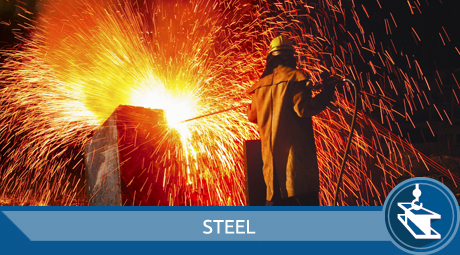
Our revolutionary technology is specialized for the demanding steel mill environment, providing unsurpassed detection of deeply buried radiation sources and therefore preventing a contamination of equipment and the overall facility. RSI’s line of instruments include radiation detection systems for vehicles, railcars, charge buckets, bag-houses, barge unloading, and conveyor belts. Laboratory measurement systems provide for traceable certification of the final steel product or any by-products such as dust and slag.
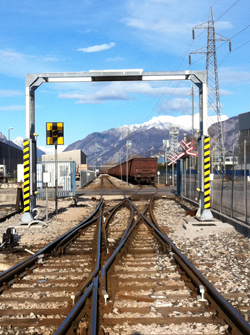
The RSI Total Plant Protection Network is evolving around the integration of all radiation detection systems used in the steel mill. RSI’s vision is to implement multiple layers of protection for the steel mill in order to maximize the detection probability and to minimize the influence of human error.
RSI’s Total Plant Protection Network integrates all of RSI’s radiation detection systems, providing an easy access of radiation data to the local RSO for inspection and verification of radiation alarms anywhere in the plant.
The primary protection involves the installation of radiation detection systems at all points of entry at the steel mill. These radiation detection systems are also known as Radiation Portal Monitors (RPM) or gate systems.
The secondary protection has a main focus on all points where scrap is (again) handled such as the scrap bay, barge unloading area, charge bucket loading area, or internal scrap transports.
In order to certify the final steel product is free from radioactivity, RSI offers laboratory equipment to measure samples of the final product. We also recommend adding area monitors to the Plant Protection Network for alerting mill personnel to possible radiation problems.
The RS-300 and RS-400 Radiation Detection Systems are specially designed for the difficult operating conditions of many steel plants. These systems use large volume detectors for optimum vehicle or train coverage. The large detectors are using multiple PMT’s with Super-Coincidence for greatly improved signal collection and best spectral shape.
RSI’s CEO Dr. Jens Hovgaard is a well-known specialist in the Noise Adjusted Singular Value Decomposition (NASVD) method of spectral data analysis. This proven technology is incorporated into the RS-300 and RS-400 Radiation Detection Systems maximizing the system capability to utilize full spectral analysis to find deeply buried or shielded radioactive sources while simultaneously minimizing false and nuisance alarms.
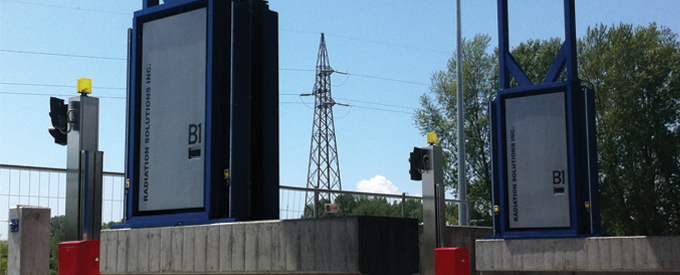
Each of the RS-300 and RS-400 Radiation Detection Systems have Quad Optical Sensors sampled at high rates for sensing the best presence of vehicles or trains, and the measurement of the vehicles speed. Optional camera system(s) can be added to the system for visualization of the vehicle and its content.
To suit even the most demanding local logistics, the RS-300 and RS-400 systems are fully modular to make it easily configurable up to 14 detectors per system. The system operates independently, but has direct Ethernet connectivity to plant networks permitting a fully integrated plant design with RSO overview on all installed systems. USB/Serial connectivity also enables system configuration to suit the user’s needs for local displays and local or network printers.
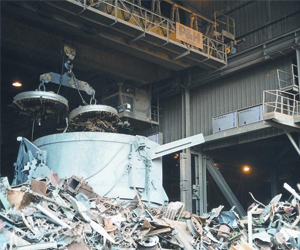
The RS-300 and RS-400 Radiation Detection Systems are offered for a “Monitor-While-Loading” or “Monitor-While-Full” application for the best detection of a radioactive source. RSI has developed different methods of analysis for these systems based on full spectral data availability in order to best suit each application.
The much preferred “Monitor-While-Loading” application consists of detecting a radioactive source before it enters into the charge bucket which allows for continuous bucket loading once a source has been detected.
Although the “Monitor-While-Loading” application is the preferred method, some logistics demand the less preferred option of “Monitor-While-Full”. In such cases, the radioactive source might be already in the charge bucket and therefore risk a major disruption of the furnace operation.
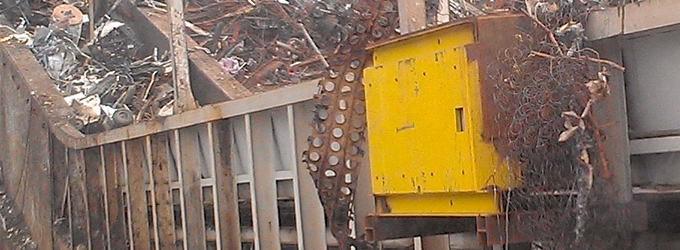
Some electric arc furnaces are using a continuous feed of scrap to the furnace by a steel conveyer belt. This process is called Consteel and provides an excellent opportunity to continuously monitor the scrap flow feed to the furnace.
Some steel mills operate a shredder to better prepare the scrap metal for the melting process. The shredder typically has an input and an output conveyor carrying the fragmented scrap pieces, providing an excellent opportunity to continuously monitor the shredded scrap.
Depending on the width of the conveyor, the RS-300 or RS-400 Systems, with adapted analysis for any conveyor application, are best suited for this type of monitoring.
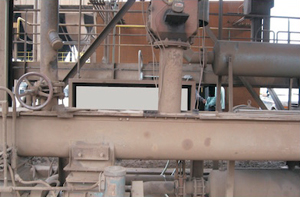
The screw conveyor or chain conveyor is often the best choice for real-time Dust Monitoring in many steel plants allowing for high performance levels. The RS-725 System with a 1024 channel high-resolution spectrometer and a NaI detector is the preferred system for this type of application.
The RS-725 is ideally suited for the difficult task of monitoring bag-house dust for radiation; predominantly Cs-137. RSI’s use of advanced spectral analysis techniques provides a measurement immune to very large local background radiation changes.
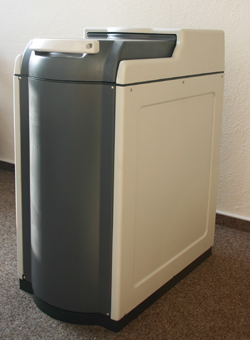
The RS-50 Lab System is an easy to use, stand-alone, floor standing unit for when traceable certification of the final steel product or any by-products such as dust and slag is required. The RS-50 has been specifically designed to measure and quantify the radioactivity in steel samples and steel by-products (Slag and Dust).
The RS-50 incorporates state-of-the-art evaluation techniques that give accurate sample analysis that is traceable to IAEA standards to an accuracy of 0.02 Bq/g in less than 5 minutes.
